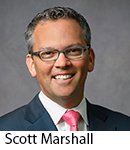
CBRE Predicts Technology-Driven Office Market Expansion
U.S. office market fundamentals should continue to improve–and the tech sector will likely remain a primary demand driver, said CBRE, Los Angeles.
“The strongest gains in employment, occupancy and rents will likely occur where recovery has lagged during this cycle, and where there is little or no construction underway, including many former housing-bubble markets in the south and west,” said CBRE Americas President of Advisory and Transaction Services Scott Marshall. “Suburban submarkets that offer a range of housing choices along with urban amenities–including retail and restaurant options, public transit and walkability–are well-positioned to capture demand from maturing millennials, and thus could be attractive to both real estate investors and occupiers.”
south and west,” said CBRE Americas President of Advisory and Transaction Services Scott Marshall. “Suburban submarkets that offer a range of housing choices along with urban amenities–including retail and restaurant options, public transit and walkability–are well-positioned to capture demand from maturing millennials, and thus could be attractive to both real estate investors and occupiers.”
The tech sector is expanding nearly twice as fast as overall job growth and has accounted for nearly 20 percent of major office leasing activity in recent years. It will likely remain a primary demand driver in leading tech markets like the San Francisco Bay area and Seattle as well as in “emerging,” lower-cost tech hubs like Charlotte, N.C. and Phoenix, CBRE said.
But several lagging sectors including financial services and energy also increased their share of office-leasing activity last year–a positive indicator of demand coming from industries other than tech, said CBRE Americas Head of Office Research Andrea Cross. “Prospects for reduced financial industry regulation and oil price stabilization have fueled optimism in these sectors, and markets with concentrations of these industries like New York and Houston should benefit,” she said.
CBRE projected net office absorption will exceed 32 million square feet this year. “As occupiers have focused on maximizing efficiency and productivity in their portfolios, net absorption has become more muted in recent years than in past expansion periods,” the market outlook report said. “That has led to more moderate but sustainable growth rates, which should continue in 2018.”
With significant construction activity happening in Manhattan, San Francisco, Washington, D.C. and other large downtown markets, city centers should account for a disproportionate share of new supply in 2018, CBRE noted. This will likely result in the downtown vacancy rate increasing 60 basis points compared to a 10 basis point suburban vacancy rate.
Overall, completions will likely outpace net absorption this year–just like last year–driving a modest 20 basis point vacancy rate increase to 13.2 percent. Given this slight vacancy rate increase, CBRE said it expects overall rent growth to decelerate to 2 percent from 2.4 percent last year.
